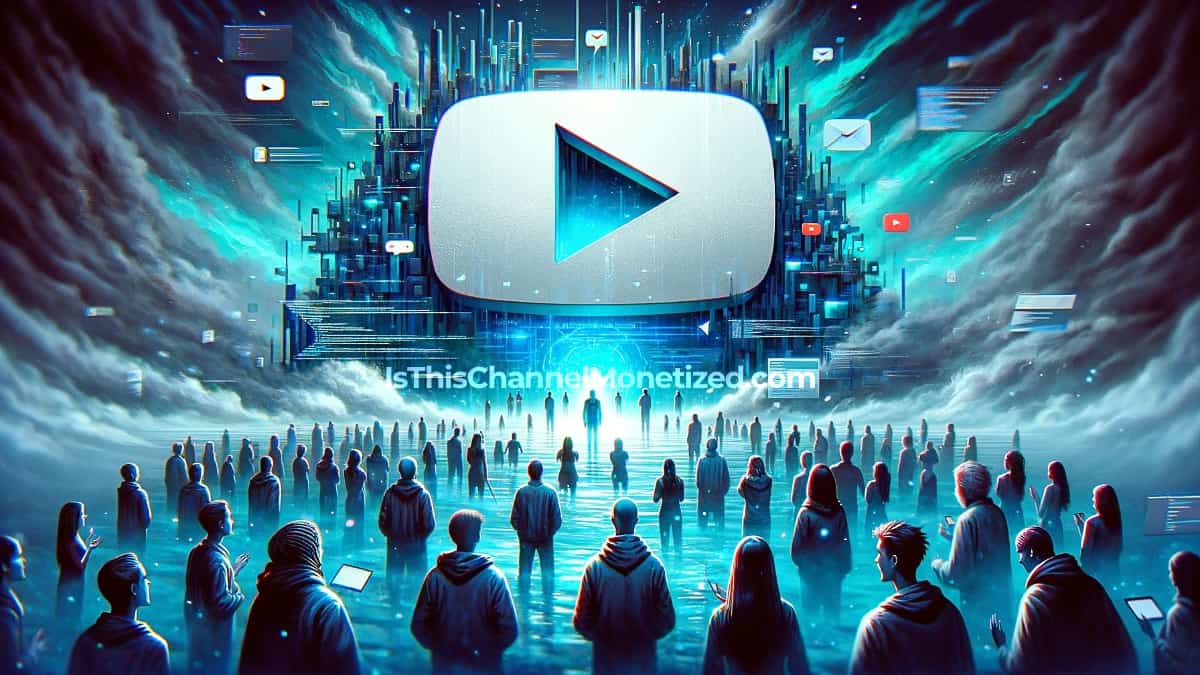YouTube’s recent removal of the monetization indicator from its platform has caused a stir among content creators and analysts.
This change, made without announcement or explanation, has significant implications for those who rely on the platform for income and data analysis.
A Sudden Shift
On November 18, 2023, YouTube content creators and tool developers noticed that all channels were being shown as non-monetized, regardless of their actual status.
This change was confirmed by a Reddit thread started on the same day, revealing that YouTube had removed the is_monetization_enabled string that indicated whether a channel was monetized.
This removal marks a significant shift in YouTube’s policy. Until this change, the monetization status of a channel could be easily determined by inspecting a channel’s HTML code or using tools like our YouTube monetization checker.
The monetization indicator had been a feature since at least December 2021 (source), providing transparency about which channels were part of YouTube’s Partner Program.
Possible Reasons for Removal
YouTube’s decision to remove this feature could be attributed to several reasons, though the company has not provided an official explanation. The speculated reasons include:
- Protecting Creator Privacy: YouTube may have removed the indicator to protect the privacy of its creators, preventing unwanted scrutiny and potential harassment based on their monetization status.
- Safeguarding Copyright: The removal could be a measure to protect copyright owners, especially in cases of content disputes. By not publicly displaying monetization status, YouTube might be trying to avoid complicating copyright issues.
- Concealing Content Monetization: Another possible reason could be YouTube’s intention to hide the monetization status of channels with controversial or divisive content, avoiding public criticism while still allowing these channels to earn revenue.
- Ethical Considerations: YouTube might have deemed that the monetization status of a channel should not have been publicly accessible information in the first place, aligning with standard digital privacy practices.
Deciphering Monetization on YouTube Post-Indicator Removal
With the removal of the direct monetization indicator on YouTube, content creators and analysts must rely on alternative data to deduce whether a channel is monetized, which is now part of Is This Channel Monetized’s monetization checker logic.
This data, while not as straightforward or reliable as the previous indicator, provides some insight into a channel’s potential monetization status.
Alternative Indicators
- Subscriber Count: YouTube’s basic requirement for entering its Partner Program includes having at least 1,000 subscribers. Therefore, channels with fewer than 1,000 subscribers are not monetized.
- “Join” Button on Channel: If a channel features a “Join” button, it is part of the YouTube Partner Program and thus monetized. This button allows viewers to become paying members of the channel, a feature only available to monetized channels.
- “Thanks” Button on Videos: Similarly, the presence of a “Thanks” button on a video confirms that the channel is monetized. This feature enables viewers to financially support the channel through one-time payments.
- Monetization of Recent Videos: Checking the recent regular videos of a channel for ads can also be a clue. If most of a channel’s recent regular videos display ads, it’s a strong indication that the channel is monetized.
Limitations and Unknowns
Despite these alternative methods, several unknowns and limitations persist:
- Total Watch Time: The total watch time of a channel, an important metric for qualification in the YouTube Partner Program, remains unknown. This information is crucial for understanding a channel’s potential for monetization but is not publicly available.
- Shorts Monetization: Since the monetization status of Shorts is not visible, assumptions can only be made based on the overall monetization status of the channel.
- Individual Video Monetization: The presence of ads on a video does not necessarily mean the channel is monetized. Sometimes, YouTube or third parties monetize individual videos due to copyright claims. This situation can lead to false assumptions about the overall monetization status of the channel.
- First Monetization Date: It’s also impossible to ascertain when a channel was first monetized unless this was tracked regularly before the removal of the monetization indicator.
- Inconsistency in Ad Display: The display of ads on videos can be inconsistent, influenced by factors like viewer location, ad settings, and viewer preferences. This inconsistency can lead to misleading conclusions about a channel’s monetization status.
Conclusion
The removal of the monetization indicator by YouTube has introduced a new layer of uncertainty for content creators and analysts.
While speculated reasons for this change range from protecting creator privacy to ethical considerations, the lack of official communication from YouTube leaves room for speculation and concern among its users.



